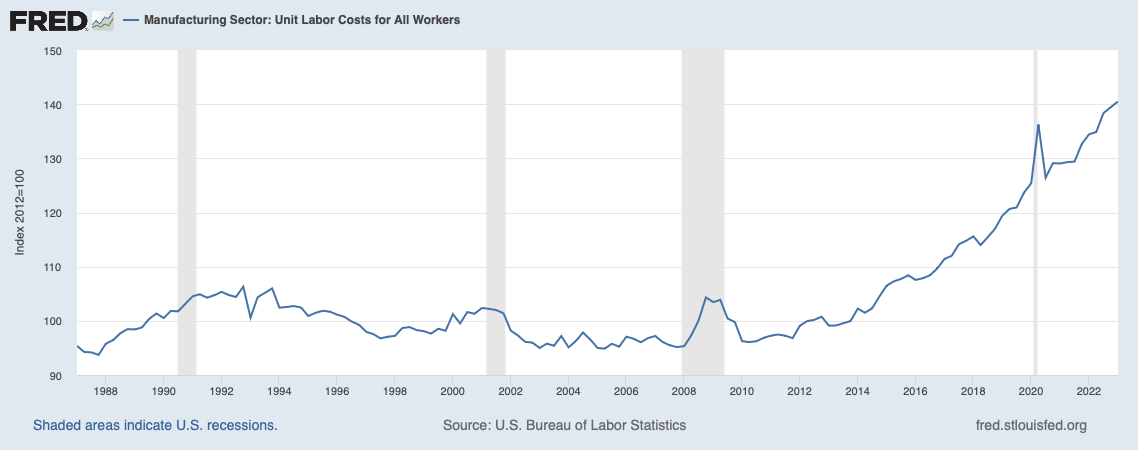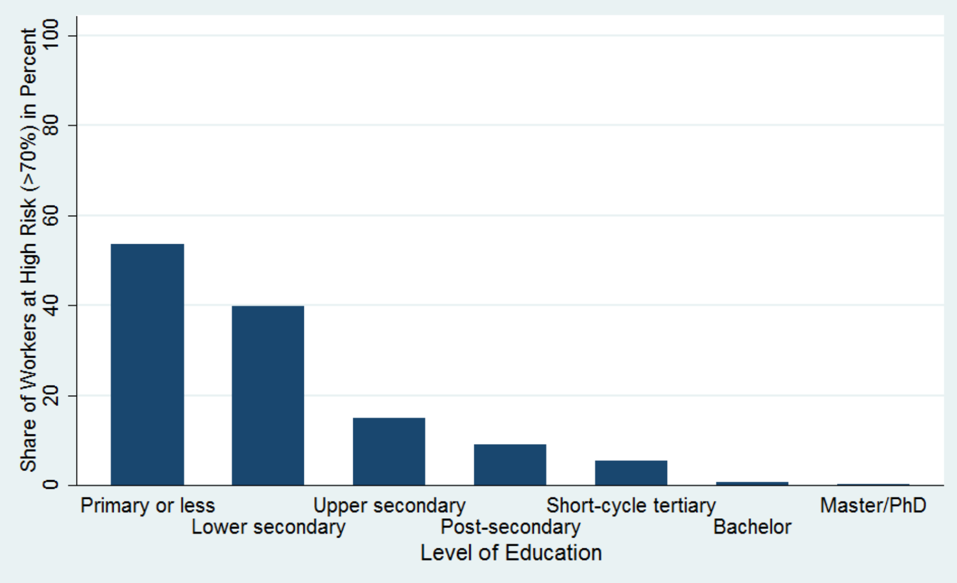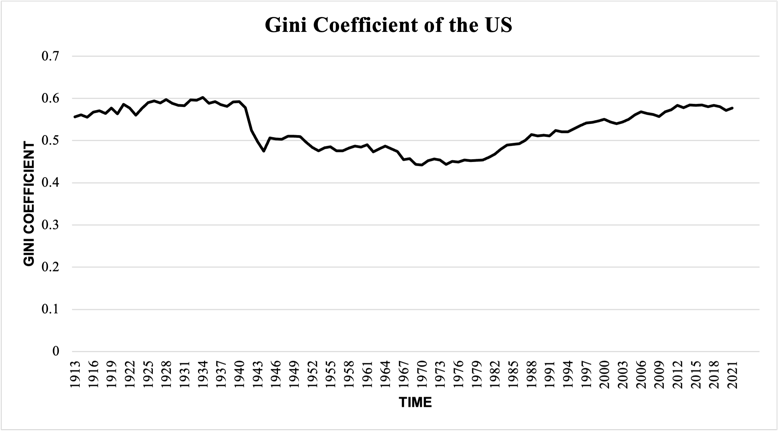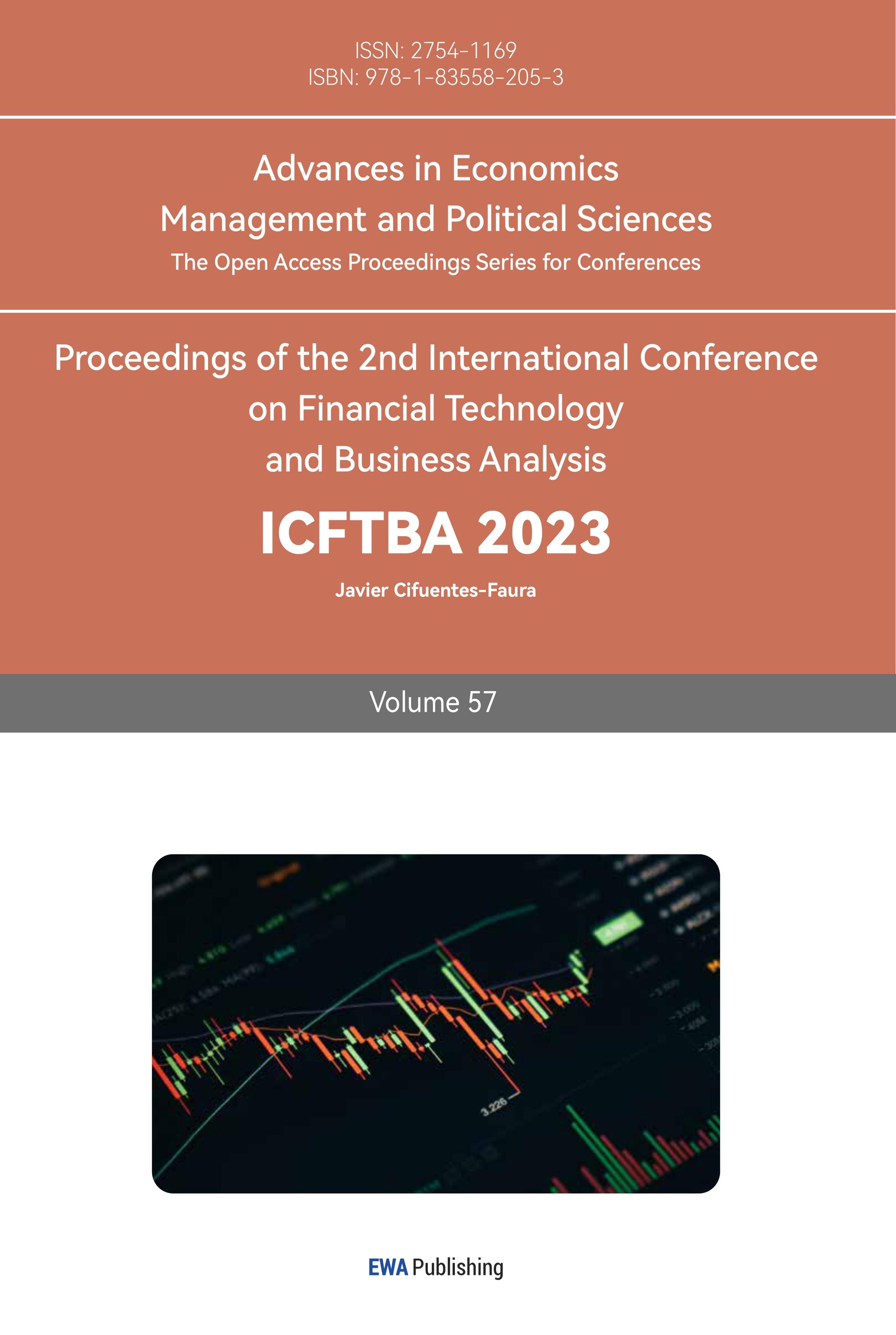1. Introduction
Artificial Intelligence refers to the capability of digital computers and robots operated by computers to perform actions that are commonly executed by intelligent individuals such as decision-making, prediction, and recommendation [1]. In recent years, there is a rapid and significant development in the field of artificial intelligence (AI). Private investment in AI has been consistently on the rise since 2013. In 2020, private investments in AI in the United States reached $35.53 billion, which further rocketed to $73.40 billion in 2021 [2]. Additionally, the government has shown strong support for the development of AI, as evidenced by the recent provision of $140 million in funding by the White House [3]. These factors indicate that both the government and investors possess a confident and positive attitude toward the advancement of AI, driven by its contributions to production and economic growth.
AI encompasses various technologies, such as natural language processing and image recognition, which achieve their objectives through training machines' learning capabilities. Based on the investigation carried out by Furman and Seamans, the error rate of AI image recognition decreased by approximately 26% from 2010 to 2017 [4]. The progress in various state-of-the-art technologies has enabled the proliferation of a higher quantity of AI products. A recent poll by McKinsey & Company found that 70% of businesses have used at least one sort of AI technology, and they forecast that AI will have an impact of approximately $13 trillion on global economic activity by 2030 [5]. The implementation of artificial intelligence in many firms highlights the improvement in labor productivity, but it also leads to job displacement, especially for those engaged in simple, repetitive, and low-skilled tasks, such as production line workers in the manufacturing industry.
Most companies incorporate artificial intelligence in their goods or services production processes, which, in turn, impacts the labor market to some extent. Some studies aim to investigate the impact of artificial intelligence (AI), analyzing it from various perspectives such as social and economic aspects, leading to both optimistic and pessimistic narratives. Certain research endeavors seek to explore the impact of artificial intelligence (AI) from diverse social and economic standpoints, providing both good and negative conclusions. According to the study conducted by Furman and Seamans, AI can enhance productivity, but its effects on the labor market are mixed [6]. They examined the extent to which different industries are affected by AI, revealing negative consequences in certain specific sectors and neutral effects on several other occupations [6]. Mutascu investigated the influence of AI on unemployment rates and found that inflation rates also play a role [7]. With the increasing presence of AI technology, the unemployment rate may decrease, but this trend appears only with low inflation [7]. Based on existing research, this paper aims to further explore the impacts of AI development. By contrasting and contrasting official data, it will investigate how AI is transforming the U.S. labor market.
2. Relationship between AI and Labor Market
2.1. The Development of AI in the United States
In 1965, a conference called the Dartmouth Conference was held at Dartmouth College, where the term "artificial intelligence" was first used. Since then, over the course of more than sixty years of development, people have entered the "big data era". Artificial intelligence, as a key concept, has changed many aspects of people's lives in terms of politics, healthcare, education, marketing, healthcare, finance, and manufacturing [8].

Figure 1: Unit Labor Costs for All Workers in Manufacturing Sector from 1988-2022 [9].
As a leader in the technology industry, the United States has witnessed significant changes, particularly in the business and manufacturing sectors. As shown in Figure 1, the general trend of unit labor costs for all workers in the manufacturing sector has increased since 2010. When comparing the costs of AI and manual labor on production lines, AI manufacturing proves to be a better choice for most large enterprises in the manufacturing industry since labor costs have steadily increased, which contributes to a great proportion of the direct cost of firms and harms their profits. This cost-benefit analysis partially explains the overall downward trend in job opportunities and employment rates in the US manufacturing industry in recent years. When compared to June 1979, employment levels in the manufacturing of both durable and nondurable goods fell significantly in June 2019. [10]. During a span of 40 years, the manufacturing sector experienced a significant decline in employment with durable products witnessing a loss of 4.3 million jobs and nondurable goods facing a reduction of 2.5 million jobs, together accounting for more than one-third of all job losses in the sector. [10]. In 2023, Arvind Krishna, the CEO of IBM, renowned for its computing expertise, will cease hiring for non-customer-facing positions that are susceptible to automation by artificial intelligence, resulting in approximately 7800 back-end jobs being replaced [11]. As a leader in the field, IBM's decision to replace human labor with artificial intelligence sets a precedent for other related businesses and, to some extent, encourages other businesses to implement similar actions. An incremental effect can eventually lead to massive structural unemployment, which is a type of natural rate of unemployment caused by a change in the structure of the labor market, in which the skills and experience of some workers no longer match the market demand.
2.2. Change in Jobs and Skills Requirements
This section must be in one column. The widespread application of artificial intelligence (AI) brings about adjustments in the tasks of the labor market, even though large-scale job replacements might not occur. However, the ability of workers to adapt to the new demands in the labor market determines their potential for being unemployed. In other words, workers' adaptability indicates whether the relationship between AI and the workforce is contradictory or compatible. From 2010 to 2019, the overall ratio of AI skill-related job vacancies to total job vacancies has shown an increasing trend, rising from approximately 0.18% to 0.72%. The number of job vacancies requiring AI skills has consistently risen from 20.6 thousand to 219.7 thousand [12]. This growth underscores the sustained increase in firms’ demand for labor with AI skills, and extrapolating this trend suggests that the demand for AI skills may increase in the approaching years, highlighting a significant requirement in today's labor market proficiency in AI skills.
AI skills are predominantly possessed by a workforce with higher levels of education, implying that individuals with lower educational backgrounds face greater risks of being replaced. According to the research by Arntz, Gregory, and Zierahn, as educational levels increase, the risk of workers being replaced decreases. The risk value is highest for the category "Primary or less," as shown in Figure 2. Hence, individuals with a more advanced level of education are less likely to be replaced by AI in the workforce.

Figure 2: Risk of Replacement over Different Levels of Education [13].
Furthermore, according to the definition of AI, it is a technology that accomplishes human tasks or objectives, such as decision-making, predictions, or recommendations, through learning. However, this learning process is mostly controlled by humans, as current AI lacks the ability for independent thinking. Therefore, there are still many tasks that AI cannot replace, such as roles involving emotions, critical thinking, and adaptability, for instance, the position of a psychological counselor. In the case of IBM, they replaced 30% of backend workers without discontinuing hiring for consumer-facing positions, which indicates the current limitations of AI capabilities.
2.3. Potential Opportunities and Risks of Artificial Intelligence Development
AI has found application in diverse fields, such as manufacturing, medicine, politics, and making business decisions. AI automates repetitive tasks and processes, thereby enhancing production efficiency and productivity. Through the automation of these tasks, AI allows humans to allocate their resources toward more imaginative and strategic endeavors. It holds the potential to elevate human capital by encouraging a greater number of individuals to tap into their capabilities and pursue creative and strategic roles, such as psychologists, game designers, etc. Additionally, AI has the capacity to expedite decision-making processes by providing more accurate data and analysis. According to the research conducted by Furman and Seamans, the error rate of AI image recognition decreased by approximately 26% from 2010 to 2017, and such accuracy is difficult for human resources to achieve [4]. When the capability of image recognition is applied to tasks such as diagnosing diseases or monitoring data changes, the time for disease diagnosis can be shortened, and data changes can be recorded with greater clarity.
Although AI holds significant potential for enhancing productivity, its current technological limitations and unpredictable future development introduce considerable risks to its widespread adoption. AI's ability to replace repetitive tasks, as exemplified by IBM, could lead to the displacement of approximately 7,800 jobs, resulting in a reduction in available job opportunities and an increase in labor market competition. However, according to Mutascu's research, AI's impact on unemployment rates is contingent on the inflation rate. Under low inflation, employing AI positively affect unemployment rates, while under high inflation, its impact is neutral [7].
Furthermore, AI is likely to exacerbate income inequality to some extent. According to studies by Arntz, Gregory, and Zierahn, individuals earning lower incomes are more susceptible to AI-driven job displacement, and similarly, those with limited educational attainment are also more vulnerable to being replaced by AI. [13]. This suggests a correlation between education levels and income, with lower educational attainment associated with lower income. In today's society, companies increasingly demand workers skilled in AI-related technologies. However, individuals with lower levels of education are less likely to possess such skills, which may increase their difficulty in finding employment, further worsening income inequality. As depicted in Figure 3, from 1970 to 2021, the Gini index in the United States has consistently increased, partially explaining the negative impact of AI on income inequality.

Figure 3. Gini Coefficient of the US. Data from World Inequality Database [14].
It is worth mentioning that there are many ethical difficulties with the use of AI. The opacity of artificial intelligence tools implies that not all decision-making processes are apparent, and humans may not fully grasp the decisions made by AI. Moreover, AI can be unfair, leading to errors, discriminatory outcomes, and inherent or introduced biases in its choices. [15]. These issues also indicate that in the short term, AI cannot replace human resources on a large scale. Instead, society requires increased control and regulation of the human resources involved in the use of AI.
3. Future Outlook and Recommendation
3.1. Future Development
According to research findings, from 2010 to 2030, roughly 47% of job roles in the United States are expected to be programmed [16]. This foretells a potential future scenario where many low-educated workers may face challenges in finding employment. However, AI significantly alleviates work pressure for individuals, as indicated by Ford's predictions, stating that 88% of job replacements occur due to AI-driven automation, resulting in enhanced efficiency in production [17]. Increased production efficiency can raise a company's output, thereby promoting economic growth in the United States.
Furthermore, AI is expected to improve the future business environment. It can standardize production processes within companies and facilitate more objective and data-driven business decisions. Moreover, AI enables the establishment of innovative industries. The introduction of AI technology enhances human resources development by optimizing the allocation of educational resources and augmenting human capital, leading to the creation of more innovative job opportunities. When appropriately managed, AI can have a positive impact on economic development.
3.2. Policy Recommendations
The following policy recommendations can be broadly categorized into two areas: first, policies aimed at enhancing human capital to ensure higher employment rates in the labor market, and second, policies concerning the regulation and control of AI usage to ensure its ethical and appropriate implementation.
To begin with, data indicates that individuals with higher levels of education are more susceptible to being replaced by AI. Therefore, the government should focus on providing increased access to educational resources. This can be achieved through the construction of more public educational facilities, lowering tuition fees, and elevating the educational attainment of low-income families. By introducing more vocational courses tailored to the demands of the labor market, such as robotics engineering, machine learning, and big data analysis, the workforce can acquire skills that align with current job market needs. Additionally, national policies should reinforce the protection of employee rights and standardize human resource management practices, for instance, by strengthening the influence of labor unions. This would encourage job retention and expand the labor force. Furthermore, policies should foster entrepreneurship and support the growth of innovative industries. Given that AI technology has the potential to replace numerous repetitive and simplistic jobs, the economy requires more innovative sectors to create new job opportunities.
Secondly, the regulation of AI usage also necessitates government policies to address ethical concerns. AI primarily operates through learning from existing theories or information to generate new insights, which raises issues regarding the privacy of personal information. The government must exercise stringent control over AI usage and adapt existing policies as AI technology advances to safeguard the rights of citizens and protect privacy.
In conclusion, these policy recommendations aim to strike an equilibrium between harnessing the potential of AI for economic growth and productivity while ensuring the well-being and rights of individuals in the workforce and society at large. By promoting education, empowering workers, and implementing responsible AI governance, policymakers can navigate the challenges posed by AI and create a sustainable and equitable future.
4. Conclusion
IBM, as a technological industry giant, has officially announced the utilization of AI to replace manual labor, signalling a development trend in the relationship between AI and the labor market. AI is expected to partially replace repetitive tasks, leading to a reduction in vacant positions within the US labor market. Concurrently, integrating AI into various industries will increase the need for AI-related skills in the job market, thereby exerting employment pressure on individuals with lower educational and income levels, while benefiting those with higher education and proficiency in AI skills. This may exacerbate income inequality, resulting in a larger pool of unemployed and disheartened individuals.
However, AI also promotes the development of human resources and encourages innovative thinking among the workforce, necessitating increased support from government policies. The government can address this issue by subsidizing low-income families, expanding public educational resources, and creating a supportive atmosphere that fosters innovation and entrepreneurship, thus ensuring the progress and development of human capital.
References
[1]. Copeland, B. (2023, July 24). Artificial intelligence (AI) | Definition, Examples, Types, Applications, Companies, & Facts. Encyclopedia Britannica.
[2]. Annual private investment in artificial intelligence. (n.d.). Our World in Data. Retrieved from https://ourworldindata.org/grapher/private-investment-in-artificial-intelligence
[3]. Kinery, E. (2023, May 4). White House announces $140 million A.I. hub investment ahead of meeting with Google, OpenAI. CNBC. Retrieved from https://www.cnbc.com/2023/05/04/white-house-announces-ai-hub-investment.html
[4]. Furman, J., & Seamans, R. (2019). AI and the Economy. Innovation Policy and the Economy, 19, 161–191.
[5]. Zarifhonarvar, A. (2023). Economics of ChatGPT: A Labor Market view on the occupational Impact of Artificial Intelligence. Social Science Research Network.
[6]. Acemoglu, D., & Restrepo, P. (2022). Tasks, automation, and the rise in U.S. wage inequality. Econometrica, 90(5), 1973–2016.
[7]. Mutascu, M. (2021). Artificial intelligence and unemployment: New insights. Economic Analysis and Policy, 69, 653–667.
[8]. Dwivedi, Y. K., et al(2021). Artificial Intelligence (AI): Multidisciplinary perspectives on emerging challenges, opportunities, and agenda for research, practice and policy. International Journal of Information Management, 57, 101994.
[9]. U.S. Bureau of Labor Statistics. (2023). Manufacturing Sector: Unit Labor Costs for All Workers [ULCMFG]. Retrieved from FRED, Federal Reserve Bank of St. Louis.
[10]. Harris, K. (2020, November 20). Forty years of falling manufacturing employment : Beyond the Numbers: U.S. Bureau of Labor Statistics.
[11]. Tangalakis-Lippert, K. (2023, May 1). IBM halts hiring for 7,800 jobs that could be replaced by ai, bloomberg reports. Yahoo.
[12]. Alekseeva, L., Azar, J., Gine, M., Samila, S., & Taska, B. (2021). The demand for AI skills in the labor market. Labour Economics, 71, 102002.
[13]. Arntz, M., Gregory, T., & Zierahn, U. (2016). The risk of automation for jobs in OECD countries. OECD Social Employment and Migration Working Papers.
[14]. Joe Hasell, Pablo Arriagada, Esteban Ortiz-Ospina and Max Roser (2023) - "Economic Inequality". Published online at OurWorldInData.org.
[15]. Stahl, B.C., Antoniou, J., Ryan, M. et al. (2022). Organisational responses to the ethical issues of artificial intelligence. AI & Soc 37, 23–37.
[16]. Michael J. Handel.(2022) Growth trends for selected occupations considered at risk from automation. Monthly Labor Review, U.S. Bureau of Labor Statistics.
[17]. Yarlagadda, R. T.. (2017). AI Automation and Its Future in the United States. International Journal of Creative Research Thoughts (IJCRT), ISSN:2320-2882, Volume 5, Issue 1 March 2017.
Cite this article
Fu,R. (2024). Analysis of the Effect of Artificial Intelligence on the Labor Market in the United States. Advances in Economics, Management and Political Sciences,57,78-84.
Data availability
The datasets used and/or analyzed during the current study will be available from the authors upon reasonable request.
Disclaimer/Publisher's Note
The statements, opinions and data contained in all publications are solely those of the individual author(s) and contributor(s) and not of EWA Publishing and/or the editor(s). EWA Publishing and/or the editor(s) disclaim responsibility for any injury to people or property resulting from any ideas, methods, instructions or products referred to in the content.
About volume
Volume title: Proceedings of the 2nd International Conference on Financial Technology and Business Analysis
© 2024 by the author(s). Licensee EWA Publishing, Oxford, UK. This article is an open access article distributed under the terms and
conditions of the Creative Commons Attribution (CC BY) license. Authors who
publish this series agree to the following terms:
1. Authors retain copyright and grant the series right of first publication with the work simultaneously licensed under a Creative Commons
Attribution License that allows others to share the work with an acknowledgment of the work's authorship and initial publication in this
series.
2. Authors are able to enter into separate, additional contractual arrangements for the non-exclusive distribution of the series's published
version of the work (e.g., post it to an institutional repository or publish it in a book), with an acknowledgment of its initial
publication in this series.
3. Authors are permitted and encouraged to post their work online (e.g., in institutional repositories or on their website) prior to and
during the submission process, as it can lead to productive exchanges, as well as earlier and greater citation of published work (See
Open access policy for details).
References
[1]. Copeland, B. (2023, July 24). Artificial intelligence (AI) | Definition, Examples, Types, Applications, Companies, & Facts. Encyclopedia Britannica.
[2]. Annual private investment in artificial intelligence. (n.d.). Our World in Data. Retrieved from https://ourworldindata.org/grapher/private-investment-in-artificial-intelligence
[3]. Kinery, E. (2023, May 4). White House announces $140 million A.I. hub investment ahead of meeting with Google, OpenAI. CNBC. Retrieved from https://www.cnbc.com/2023/05/04/white-house-announces-ai-hub-investment.html
[4]. Furman, J., & Seamans, R. (2019). AI and the Economy. Innovation Policy and the Economy, 19, 161–191.
[5]. Zarifhonarvar, A. (2023). Economics of ChatGPT: A Labor Market view on the occupational Impact of Artificial Intelligence. Social Science Research Network.
[6]. Acemoglu, D., & Restrepo, P. (2022). Tasks, automation, and the rise in U.S. wage inequality. Econometrica, 90(5), 1973–2016.
[7]. Mutascu, M. (2021). Artificial intelligence and unemployment: New insights. Economic Analysis and Policy, 69, 653–667.
[8]. Dwivedi, Y. K., et al(2021). Artificial Intelligence (AI): Multidisciplinary perspectives on emerging challenges, opportunities, and agenda for research, practice and policy. International Journal of Information Management, 57, 101994.
[9]. U.S. Bureau of Labor Statistics. (2023). Manufacturing Sector: Unit Labor Costs for All Workers [ULCMFG]. Retrieved from FRED, Federal Reserve Bank of St. Louis.
[10]. Harris, K. (2020, November 20). Forty years of falling manufacturing employment : Beyond the Numbers: U.S. Bureau of Labor Statistics.
[11]. Tangalakis-Lippert, K. (2023, May 1). IBM halts hiring for 7,800 jobs that could be replaced by ai, bloomberg reports. Yahoo.
[12]. Alekseeva, L., Azar, J., Gine, M., Samila, S., & Taska, B. (2021). The demand for AI skills in the labor market. Labour Economics, 71, 102002.
[13]. Arntz, M., Gregory, T., & Zierahn, U. (2016). The risk of automation for jobs in OECD countries. OECD Social Employment and Migration Working Papers.
[14]. Joe Hasell, Pablo Arriagada, Esteban Ortiz-Ospina and Max Roser (2023) - "Economic Inequality". Published online at OurWorldInData.org.
[15]. Stahl, B.C., Antoniou, J., Ryan, M. et al. (2022). Organisational responses to the ethical issues of artificial intelligence. AI & Soc 37, 23–37.
[16]. Michael J. Handel.(2022) Growth trends for selected occupations considered at risk from automation. Monthly Labor Review, U.S. Bureau of Labor Statistics.
[17]. Yarlagadda, R. T.. (2017). AI Automation and Its Future in the United States. International Journal of Creative Research Thoughts (IJCRT), ISSN:2320-2882, Volume 5, Issue 1 March 2017.









